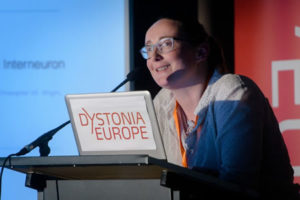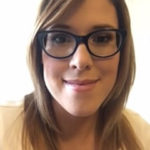The conference program included a visit to the European Parliament and two days of highly involving plenary symposium. There were three main parts in the Conference program, namely: (1) The history of Dystonia Europe; (2) patient’s testimonies and (3) scientific lectures. The history of Dystonia Europe development was presented by Alistair Newton, the Founder of the Association. He took us on a beautiful, historic journey to show the tremendous achievements in connecting patients and doctors to spread awareness about the disease. Very important part of the Conference was My dystonia story, when patients presented their own experiences with the disease. This was usually a long and hobbling journey from the first symptoms to the final proper diagnosis. Meaningfully, patients share their experiences and contributed to better future management tips for others. Finally, the scientific lectures focused on updates on recent developments in dystonia research, with the disease pharmacological treatment options and physiotherapy.
Research in dystonia

Prof. Rose Goodchild
Professor Rose Goodchild presented highlights of current basic research in dystonia including implicating glial cell defects and novel information about the molecules and signals, disturbed in dystonia, that might be potential therapeutic targets in future. In an excited presentation, professor Maja Relja showed first results of an international survey on quality of life, satisfaction and access to treatment of over 1000 dystonia patients across Europe. Professor Maja Relja shared also her experience on training family doctors in dystonia and proved that sharing knowledge about this disease leads to improvement in multiple aspects of dystonia management especially in diagnosis and treatment.
Another highlight during the Conference presented by prof. Christine Klein was the DYSTRACT Consortium, a German, multicentre, research network. This outstanding program covers multiple aspects of dystonia including basic research on animal models, threw genetics of dystonia to clinical trial of novel treatment approach.
Additionally, research on musician’s dystonia are also a part of the DYSTRACT initiative. Prof. Alexander Schmidt presented risk factors and genetic contribution to musician’s dystonia. Interestingly, he also established a unique program for professional musicians to prevent musician’s dystonia by minimising risk factors (e.g. stress associated with musical activity) at The Kurt Singer Institute for Music Physiology and Musicians’ Health.
The venue covered also management of movement disorders in children presented by Dr. Jean-Pierre Lin from London. This is a very important topic in terms of recognizing potentially curable dystonia in childhood from cerebral palsy.
Professor Brigitte Girard from Paris gave a lecture about early signs and symptoms of blepharospasm accompanied by diagnostic and treatment approaches. All delegates received her book about this type of focal dystonia.
Treatment options
Treatment options featured many topics, namely: botulinum toxin injections, physiotherapy and deep brain stimulation (DBS) in dystonia. Professor Dirk Dressler showed that despite long lasting history of botulinum toxin in neurology high quality research is still needed to explore for example new modes of action. Dr. Jean-Pierre Bleton showed how important it is with activation of the inhibited, anti-dystonic corrective muscles. Professor Marie Vidailhet spoke about transcranial magnetic stimulation and its potential usefulness in the treatment strategies for dystonia. DBS was introduced by Prof. Marwan Hariz and Dr. Laura Cif. The presentation took us step by step from qualification criteria and the best time to do DBS, preparation before the procedure, surgery itself and then management after the operation. The presentation pointed out that DBS is usually more beneficial for patients with primary dystonia then for those with secondary dystonia and better in mobile than fixed dystonic postures.
Also regarding treatment strategies for dystonia, I would like to mention a powerful lecture delivered by Prof. Marjan Jahanshahi about self-management strategies for living well with dystonia. She presented 23 commandments which should be incorporated in daily living with chronic disease to empower coping mechanism and for living better. The delegates makeup created a true cross section of the dystonia community. Monika Benson along with Dystonia Europe board, again launched a very successful meeting with a focus not only on the current state of dystonia (e.g. science and care) but also in an emerging innovated format of scientific meetings for the dystonia patient community, a format that integrates all engaged professionals and patients. The idea of integrating dystonia community will hopefully lead to interesting collaborations. Again Dystonia Europe proved that we are stronger together .

Katarzyna Smilowska MD, PhD
Silesian Center of Neurology
Katowice, Poland
Read this story and many more in our Summer newsletter. Download this now!
